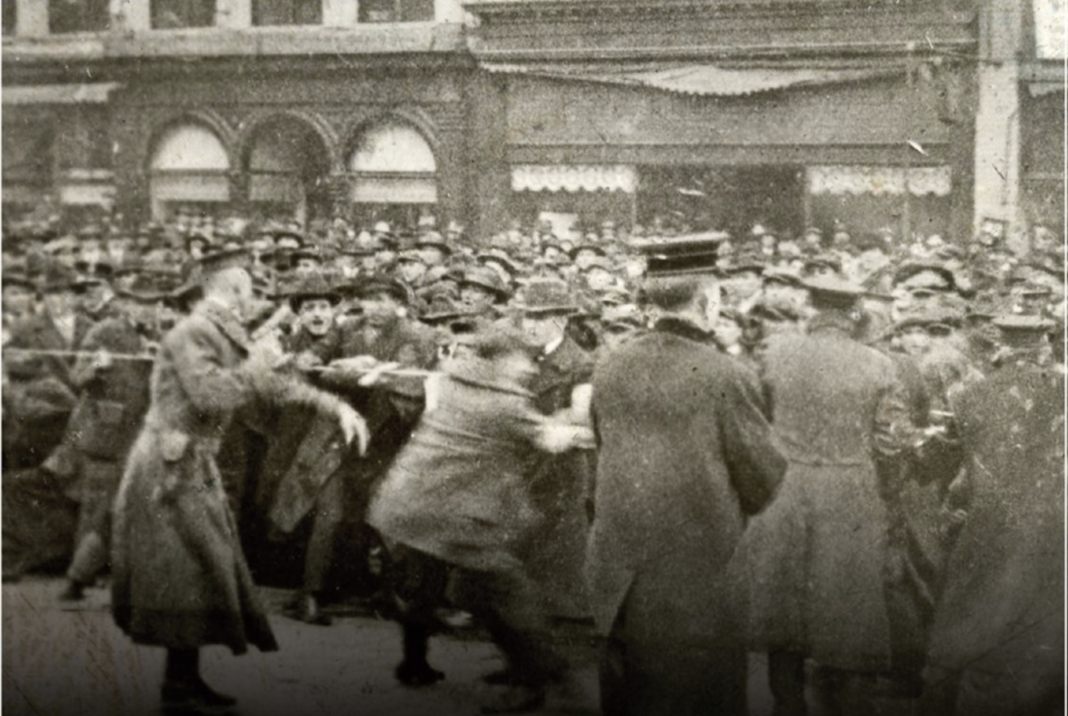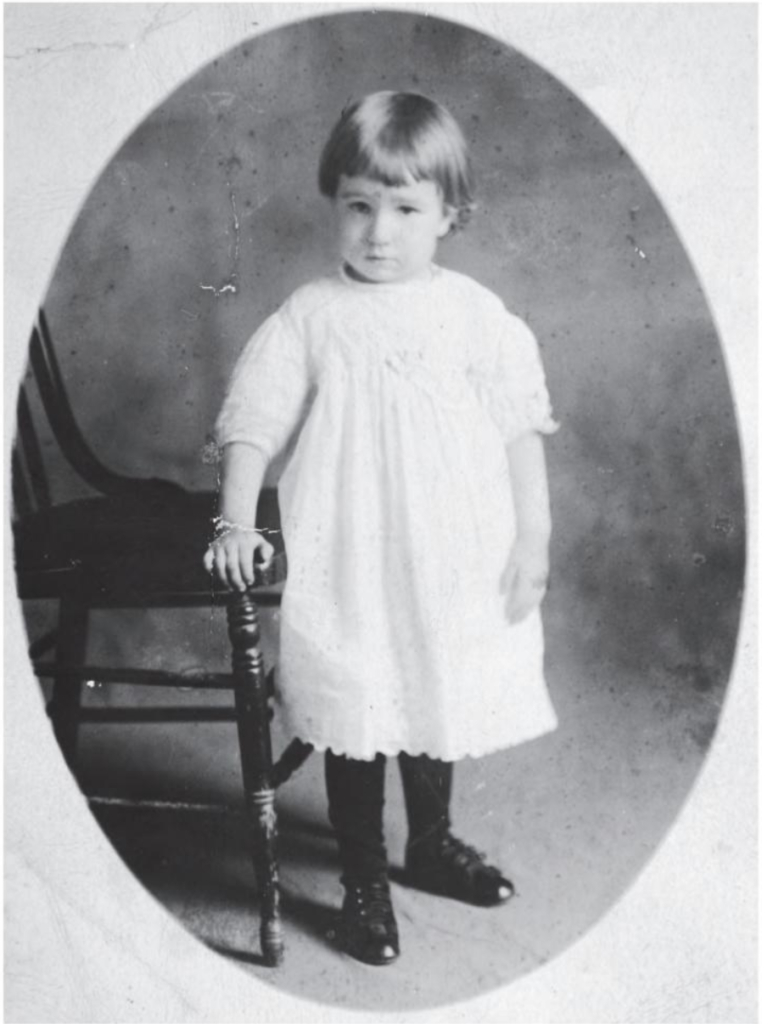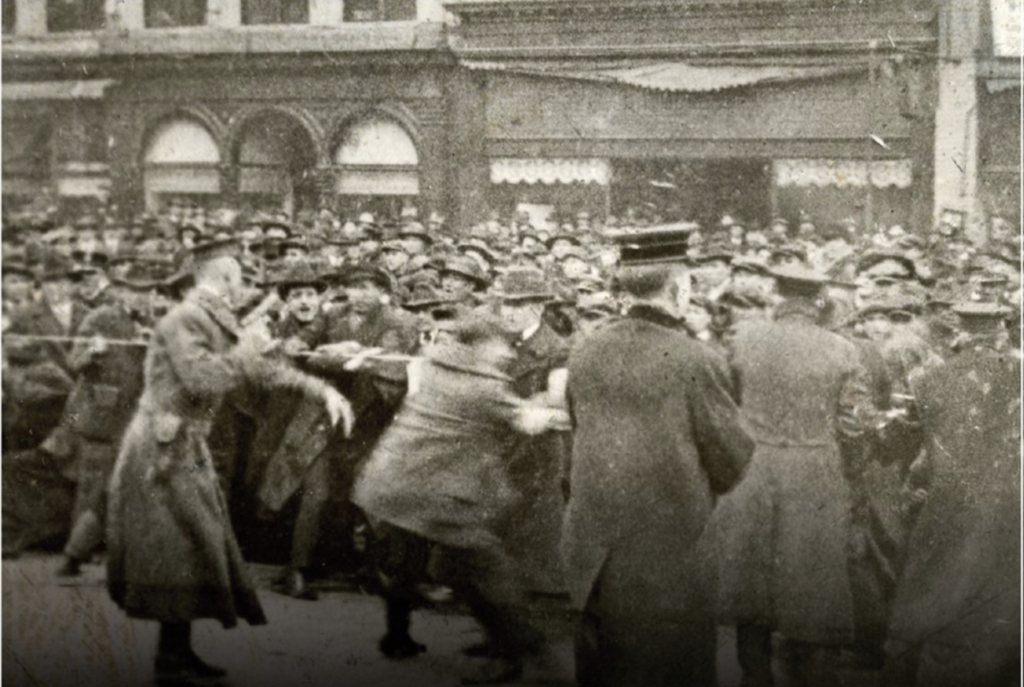
In 1920, ten-year-old Geneva Hardman was murdered on her way to school, just outside Lexington. Both civil authorities and a growing lynch mob sought Will Lockett, a black army veteran, as the suspect. The vigilantes remained one step behind the lawmen, and a grieving family erred on the side of justice versus vengeance. During the short trial, tensions spilled over and shots were fired outside the courthouse, leading to a declaration of martial law. Six people died in what civil rights leader W.E.B. Du Bois described as the “Second Battle of Lexington.”
The following article is adapted from chapters of The Murder of Geneva Hardman and Lexington’s Mob Riot of 1920 by Peter Brackney
The Crime
“I am going to school” were a few of the words written by Geneva Hardman to her sister just eleven days earlier. And so she did.
About 7:30 a.m. on the morning of February 4, 1920, Geneva departed for the schoolhouse. The distance was about four-tenths of a mile from her home. On most mornings, a neighbor boy about Geneva’s age joined her for the almost half-mile walk to school. But on February 4, he was kept at home to help on his family’s farm. Severe weather, as observed in Geneva’s letter to her sister, continued in late January and the first days of February; it is likely that Geneva’s young walking companion was needed on the farm to help clean up from the most recent rounds of bad weather. And, so, Geneva walked alone.

The young girl, known for her sweet disposition and for being a quick study, darted between the raindrops on the cold, rainy morning. J. Winston Coleman began his pamphlet Death at the Court-House by setting the scene as being “a cold, wet Wednesday morning.” She must not have sensed the presence of another coming upon her. For it was on this morning that young Geneva would be brutally taken from this earth.
The afternoon’s Lexington Leader ran that day under the headline “Girl Murdered by Man in County.” On her walk to school, ten-year-old Geneva was knocked unconscious and dragged some one hundred feet away from the road. She was both assaulted and murdered in the field.
Read More: The Murder of Geneva Hardman and Lexington’s Mob Riot of 1920 by Peter Brackney
The allegation of rape never appeared in the court record, but allusions to such a heinous crime exist in several accounts. Specifically, military intelligence reports identify that the assault having been committed against the young Geneva was of a sexual nature.
Across the road from the gruesome scene, Belle McCubbing was feeding her chickens. During this daily routine, she often heard the voices of children before and after the school day. But she reported hearing nothing unusual— and certainly no sounds of distress—on the morning of February 4, 1920.
Some have suggested that McCubbing not having heard any distress as being an indication that the man ultimately accused was innocent. This theory suggests that Geneva would have screamed if an unknown man suddenly appeared and then attempted to assault or harm her.
Speed Collins, a farmer in the South Elkhorn community, passed along the site where the young Geneva was first attacked as early as 7:45 a.m.

Then and there, he observed a school satchel lying beside the roadside Believing it belonged to one of the pupils at the nearby South Elkhorn School, Collins took the satchel up the hill to the schoolhouse. Geneva’s teacher, Anne Young, immediately recognized the bag as belonging to Geneva Hardman.
Young considered the most likely cause of the wayward satchel: Geneva had fallen ill on the way to school. As a result, the schoolteacher dispatched a few of the older students to return the bag to Geneva at her home.
Buy the Book: The Murder of Geneva Hardman and Lexington’s Mob Riot of 1920 by Peter Brackney
The minutes that followed are the nightmare of any parent. When her classmates arrived at the door, Mrs. Hardman answered. This much was clear: her daughter was missing. She had left for school and had neither arrived at her destination nor returned home; en route, she had lost her satchel. The Lexington Leader offered that “the mother immediately became alarmed and with another son and daughter started out to search.” A search was immediately begun for ten-year-old Geneva. The schoolchildren stopped at Claude Elkin’s store. Elkin joined the search, along with Collins, Thomas Foley, and Geneva’s mother and one of her brothers.
The search for Geneva began where Collins had found the satchel.
Someone in the search party quickly noted the “tracks of a large man and the child…on the other side of the fence in the field, where the mud was very deep, and a shallow trail indicated that her body had been dragged back into the field.” The tracks, “plainly” visible, were followed. This detail of the duality of plainly visible tracks has also been identified, by some, as evidence that Geneva willingly went with whoever would be her assailant.
Beyond whatever tracks may have been visible, corn fodder partially covered the body of the young girl. All was splattered in the innocent blood of a child, and a hair ribbon lay trampled in the mud. The umbrella that she had carried to protect her from the rain lay broken on the ground.
J. Winston Coleman Jr.’s Death at the Court-House, a booklet published in 1952 and considered to be the most complete accounting of the events described in this book, wrote that “a large, blood stained rock which had been used to crush the child’s skull was found by her side. The condition of the ground has somewhat cushioned the blows of the killer, and the impression of the child’s head, with one of her hair ribbons, was seen in the soft earth.” The frightful scene could have only been made worse by Mrs. Hardman being in the search party that day. The overwhelming emotion of finding one’s child in such a condition is not fathomable except to those who have experienced a similar event themselves.
Reported the Lexington Herald: “The child’s body was removed to [her] home within an hour after she had left it at 7:30 o’clock. The mother was prostrated by shock.” She did not, however, grieve alone. Soon, all of central Kentucky would grieve for Geneva Hardman.
Buy the Book: The Murder of Geneva Hardman and Lexington’s Mob Riot of 1920 by Peter Brackney
The Manhunt
Both law enforcement and the civilian posses multiplied in number as word continued to spread of the murder. Police officers and sheriff ’s deputies from Fayette County were joined by their colleagues from Jessamine County (and its seat, Nicholasville) and Woodford County (and its seat, Versailles).
The South Elkhorn neighborhood is situated not far from the intersection of these three counties. Armed farmers joining the manhunt ultimately numbered in the hundreds.
Whoever was to catch the accused would be forced with the decision of turning him over either to the law or to lawlessness. If the civilian searchers found him, it was feared that a lynching would immediately result. A race to catch Geneva’s assailant was on “Will Lockett was the man searched for from the first,” wrote the Lexington Herald on Thursday morning under the headline “All-Day Pursuit Brings Capture; Negro Confesses.” The column reported that all those seeking a culprit immediately focused on Will Lockett.
Wrote J. Winston Coleman, “After an all-day pursuit [of] several hundred farms and [by] officials from three counties, Lockett was captured at 4:30 o’clock in the afternoon at Dixontown.” Upon discovery and capture, police offiicals engaged Lockett in a harried interrogation. Finally, Lockett was asked about motive: “What made you kill her?” To which the accused responded, “I don’t know.” After the confession, Lockett was immediately transferred to the county Jail – but swiftly transferred to the state reformatory over concerns for his safety. The concern was well founded. Soon, a crowd (unaware that Lockett was no longer inside) formed outside the Fayette County jail demanding that the accused be released to the crowd.
Read More: The Murder of Geneva Hardman and Lexington’s Mob Riot of 1920 by Peter Brackney
The Trial On the morning of February 5, 1920, the Fayette County grand jury issued an indictment against Will Lockett for the murder of Geneva Hardman the day before. The grand jury’s indictment found that Lockett “with force and arms, did unlawfully, willfully, maliciously, feloniously and of his malice aforethought, kill, slay and murder Geneva Hardman by striking, wounding and beating the said Geneva Hardman with a stone, a deadly weapon, from which striking, wounding and beating the said Geneva Hardman then and there died.”
Even with the justice system progressing at a hurried pace, the mob action of the previous evening did not abate. Judge Charles Kerr recognized that in order that justice might prevail through the avoidance of an unjust lynching of the accused, he scheduled the trial for Monday, February 9, during the court’s regular session. After a frantic trial, Judge Kerr permitted the jurors to return their verdict without leaving their seats. He gave the jury its charge: “Gentlemen of the jury, you are directed to find the defendant guilty of murder and fix his punishment at life imprisonment in the penitentiary, or death, in your discretion.” The jury returned a death sentence at 9:40 a.m. Will Lockett would be electrocuted in Eddyville, Kentucky, on March 11, 1920.
The Mob
The shots that had been fired at 9:28 a.m. on the morning of February 9, 1920, were not merely warning shots. Some thought them to be those of a machine gun rattling off rounds into the mob that sought entrance into the old courthouse “to rob the law of its victim.” Final reports indicated that the machine gun saw little to no use, while soldiers firing above the crowd with automatic weapons caused the reverberating sounds.

Ultimately, neither the gauge of the bullets nor the type of firearm discharged altered the outcome. The afternoon Lexington Leader’s afternoon headline read: “Four Persons Lose Their Lives When Attempt Made to Storm Court House.” In the newspaper the following morning, citizens learned that the initial fatality list was an under count. Although five killed had been immediately reported, a sixth would die from injuries sustained. An ensuing riot led to a two-week declaration of martial law following the trial.
And still, another score suffered.



